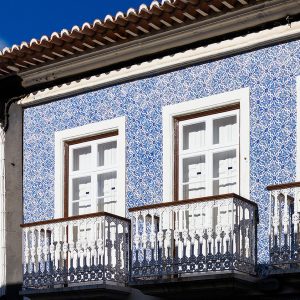Azulejos: The Pearls of Portugal
The tradition of Portuguese ceramic tiles, known as azulejos, is truly unique. For over five centuries, these stunning tiles have adorned the walls of churches, monasteries, palaces, underground railway stations and private homes, serving both as integral elements of urban design and as reflections of Portugal’s rich cultural history.
The custom of covering walls with azulejos began spreading in Portugal in the early 16th century, strongly influenced by Spanish and Islamic art traditions. Initially, the ceramic tiles were mainly used in interior decorations, and were luxuries only the wealthiest could afford. However, by the 19th century azulejos had made their way onto building facades, not only enhancing architectural aesthetics but also protecting structures from humidity and the weather, giving Portuguese cities their distinctive, colourful character.
Gallery
The evolution of azulejos reveals influences from various artistic movements, reflected in changes in the motifs, compositions, colours, techniques and tile shapes. The 17th century was the era of patterns, featuring intricate geometric and natural motifs. The 18th century, also known as the age of masters in terms of azulejos, introduced grand blue-and-white panels depicting historical, mythological and religious scenes in elaborate Baroque compositions. These works reflected the influences of Dutch ceramics and Chinese porcelain, as well as the growing prosperity in the Portuguese society. Following the devastating Lisbon earthquake of 1755, patterned tiles made a comeback, when they were used to cover both walls and architectural elements during the city’s reconstruction.
By the 19th century, azulejos had become even more prominent in Portugal’s urban landscape, bringing brightness and light to the streets. In northern Portugal, prosperous citizens commissioned embossed azulejos to decorate their houses. The early 20th century saw the influence of Art Nouveau in azulejo design, while a traditional historicist style was used for tiles depicting key events in Portuguese history. However, after the fall of the monarchy and World War I, azulejo production declined, only to experience a revival after World War II. Artists began creating large-scale azulejo murals for public spaces, and ceramic factories, such as the Viúva Lamego, became significant creative hubs. Contemporary artists continue to view azulejos as an essential part of Portugal’s cultural identity.
The inspiration for an azulejo exhibition in Tallinn stems from the oeuvre of the Estonian art classic Adamson-Eric. Though he lived in a different time and space, Adamson-Eric created hundreds of unique ceramic tiles, distinguished by their bright colours, intricate motifs and masterful craftsmanship, demonstrating Estonia’s deep artistic connections to broader European cultural traditions.
The exhibition has been organised in collaboration between the Art Museum of Estonia and the the National Azulejo Museum of Portugal.
Curators: João Pedro Monteiro, Karin Vicente
Exhibition design: Kaarel Eelma
Graphic design: Kätlin Tischler-Süld
Educational programmes: Maris Paal
Exhibition team: Isabel Aaso-Zahradnikova, Richard Adang, Sofia Caldeira, Paulo Catarino, Lurdes Esteves, Sofia Garcia, Carla Garvão, Kersti Koll, Tambet Kütt, Alexandre Nobre Pais, Villu Plink, Renita Raudsepp, Martin Rünk, Rosário Salema de Carvalho, Libório Manuel Silva, Laura Tahk, Terje Tammearu, Annika Teras, Kersti Tiik, Madli Valk, Helen Volber












